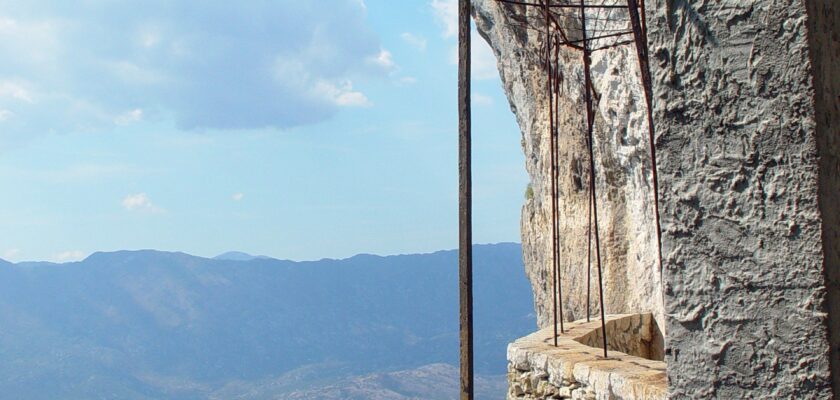Monastery Ostrog
Ostrog Monastery is an active male monastery in Montenegro, cut into a steep cliff at an altitude of about 900 meters above sea level.
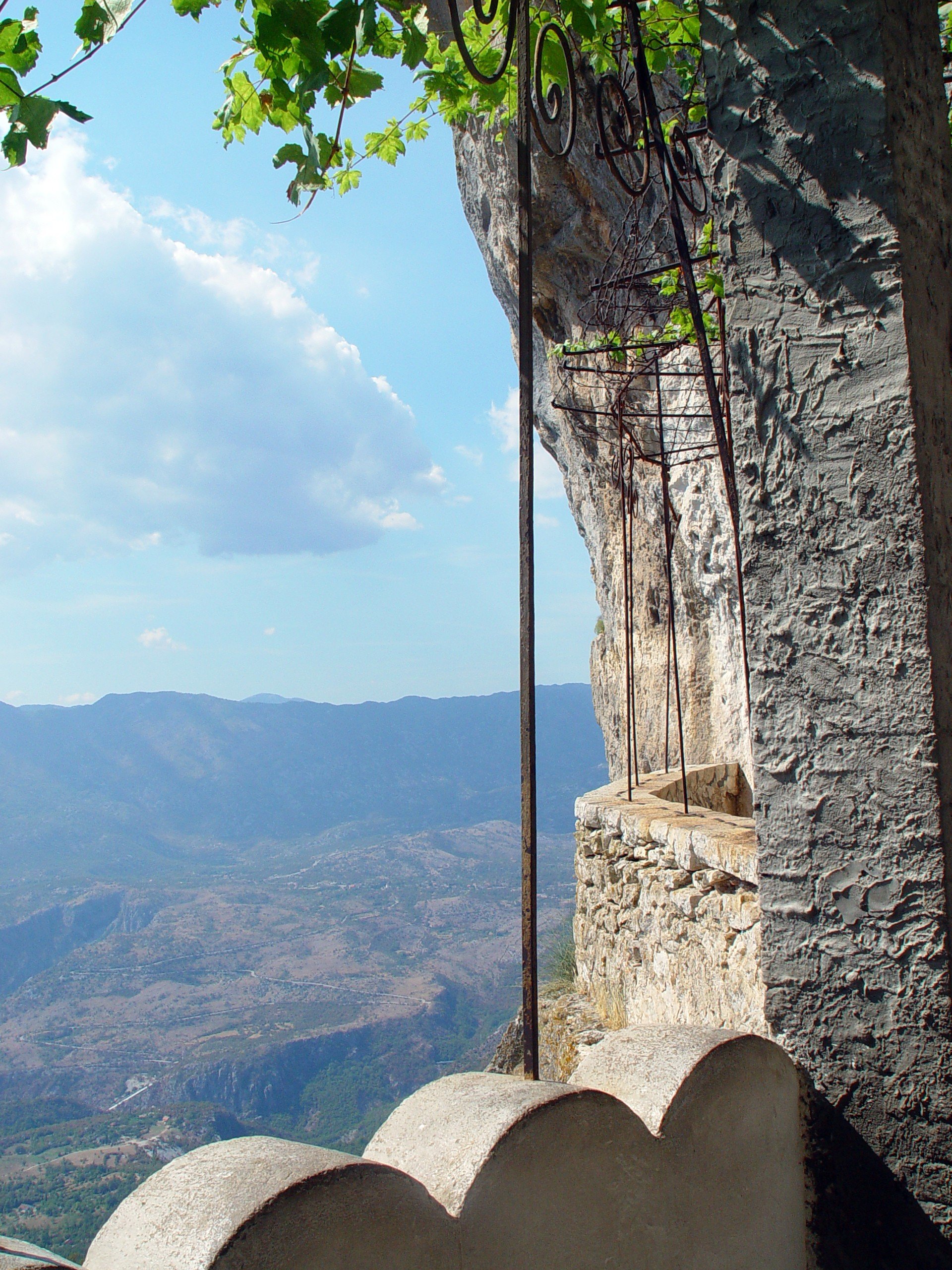
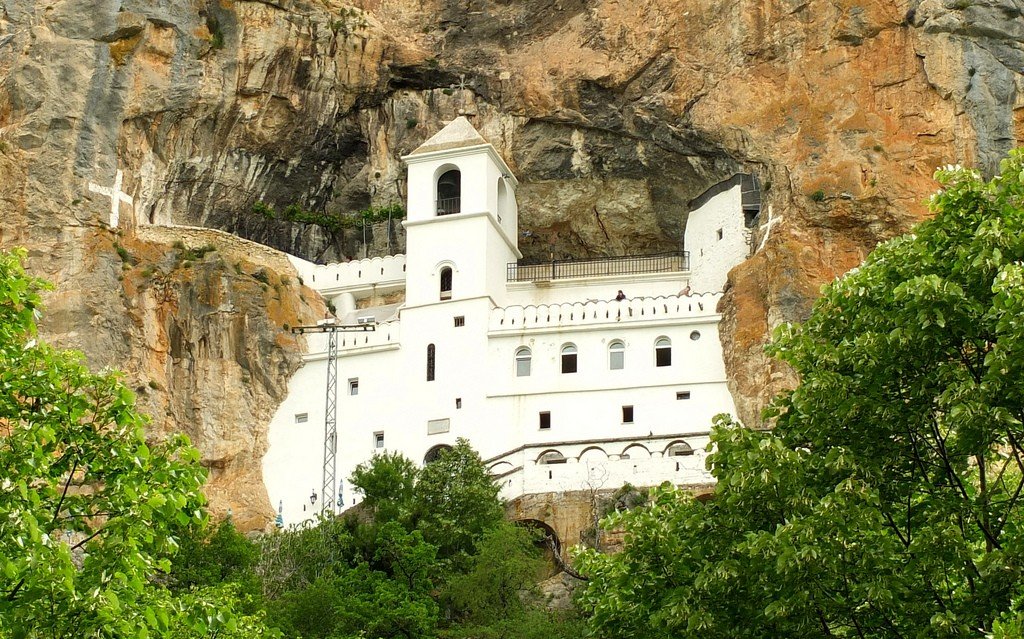
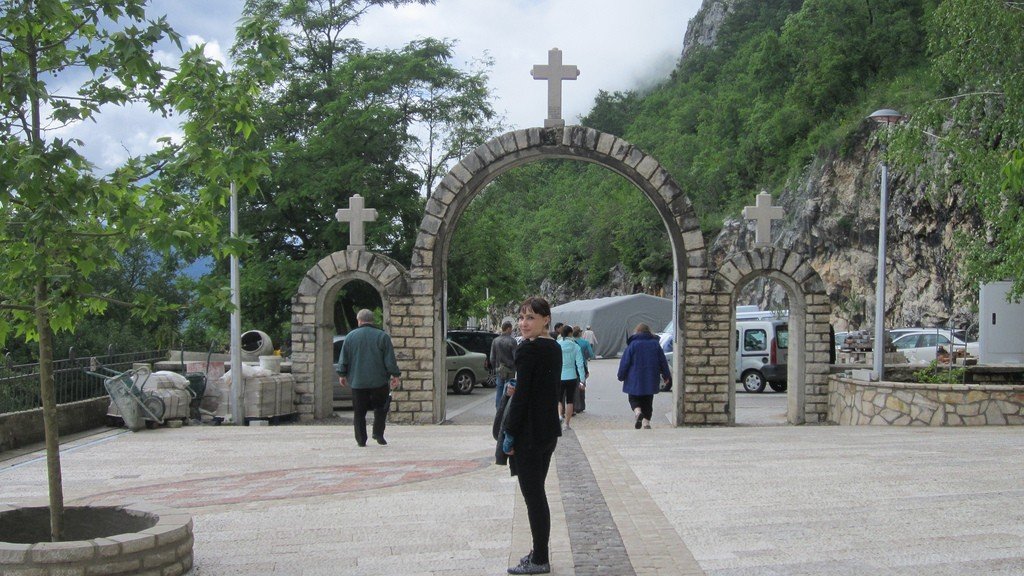
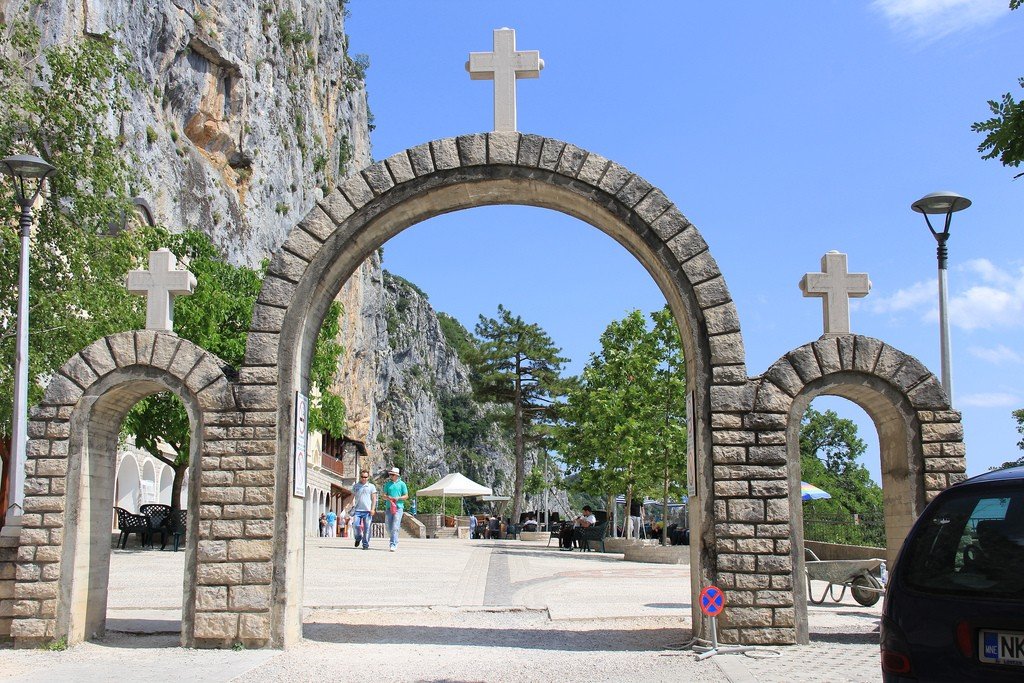
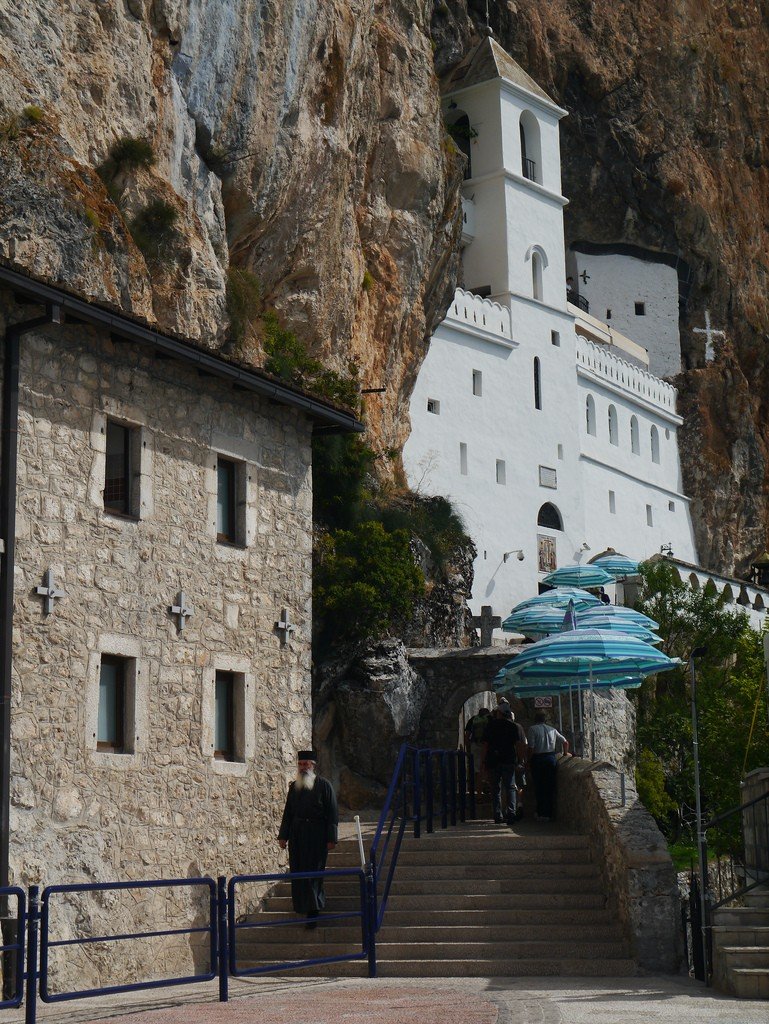
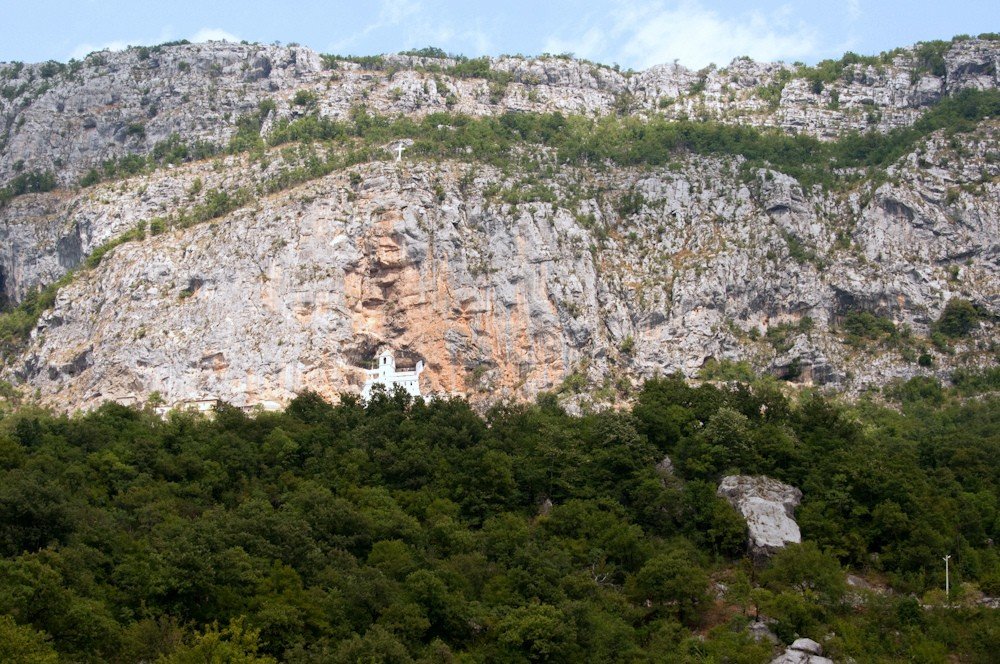
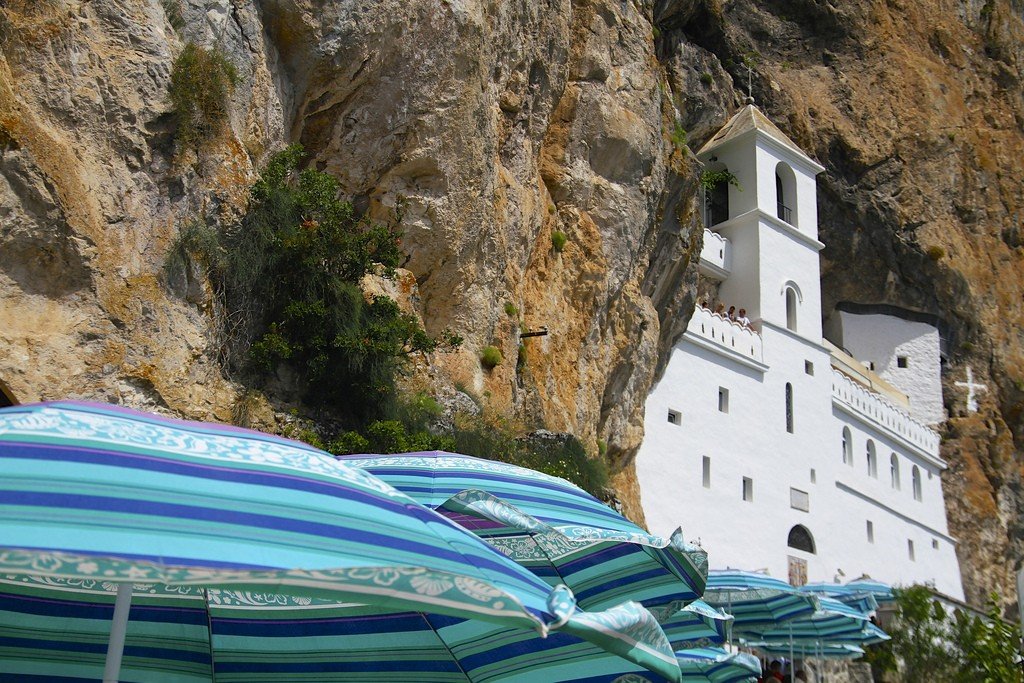
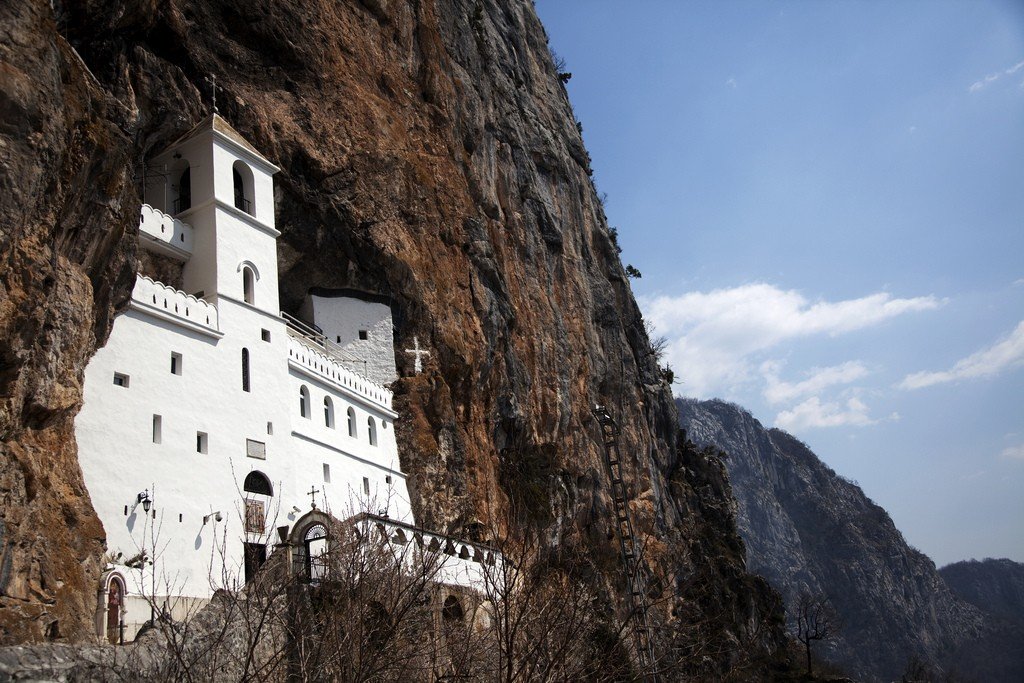
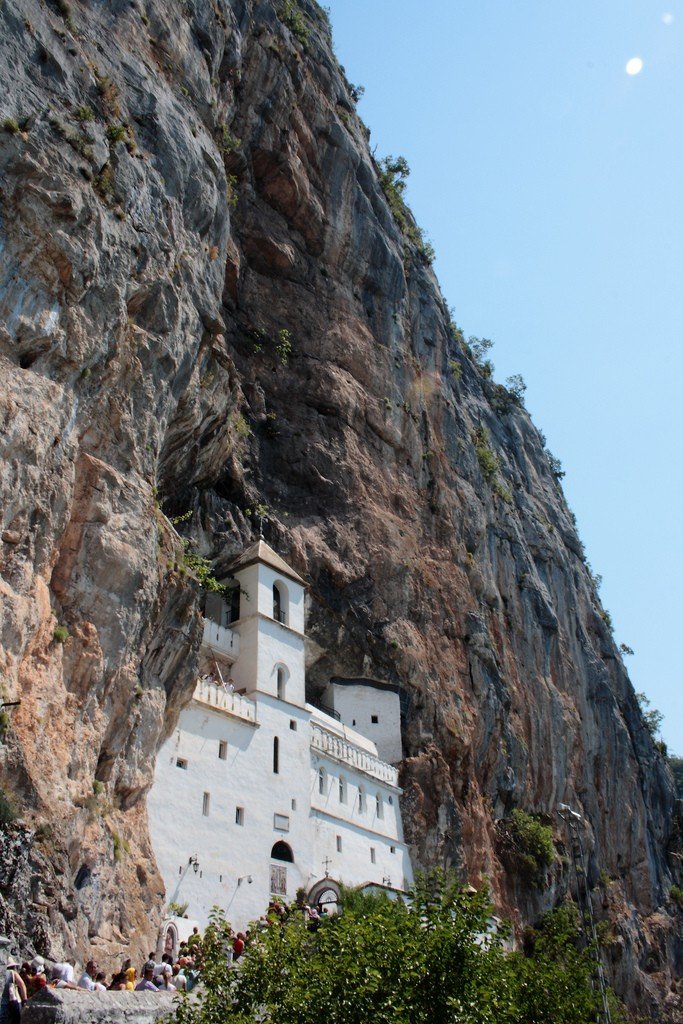
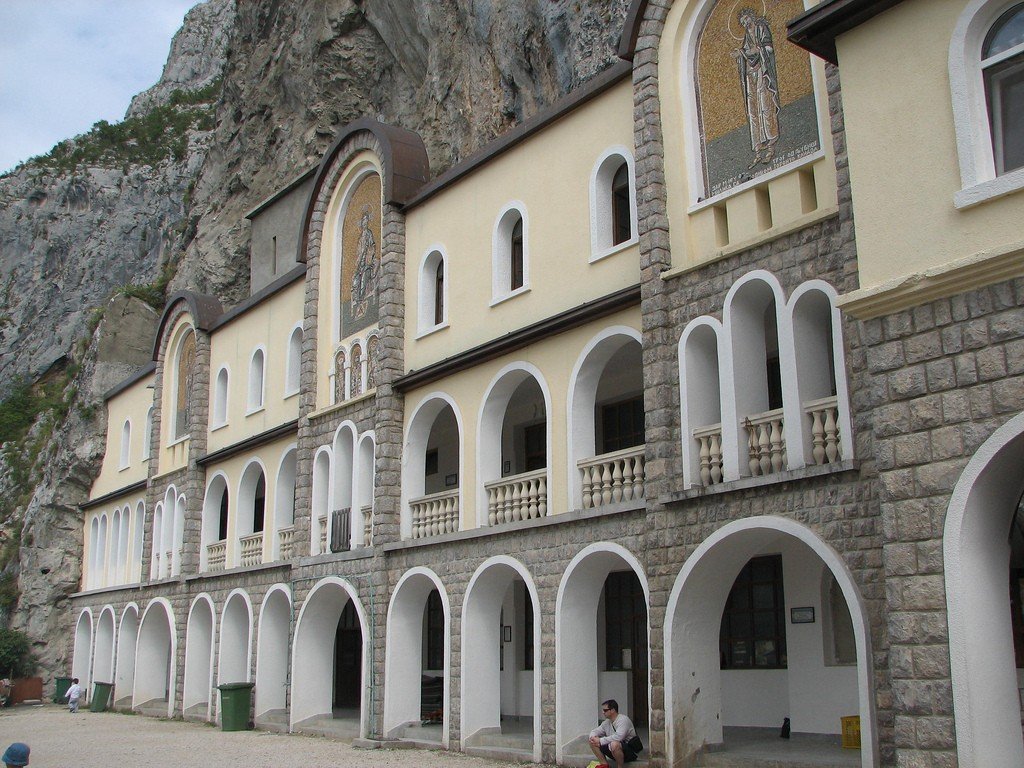
General information
Due to the uniqueness of the monastery’s architecture and location, Ostrog is a symbol of true faith and purity of spirit, like a guiding star it can be seen from afar at any time of day.
.
Ostrog Monastery consists of two parts: the Upper and the Lower Monastery. They are separated by a long road through the forest, its length reaches 5 km. Pilgrims still more often use the pedestrian road, which can be overcome in 20-25 minutes. In the lower monastery rest the relics of the 15-year-old boy Stanko, the Holy New Martyr, whose hands were cut off by the Turks because he did not want to let go of the Holy Cross. The upper part contains the most important sights of Ostrog, it is built into a rocky niche at an altitude of 900 meters above sea level. The upper part includes two small churches: the Church of the Vvedenskaya Church of the Virgin Mary and the Church of the Holy Cross. The Vvedenskaya Church is famous for the fact that St. Basil of Ostrog spent 15 years in prayer here.
The Ostrog Monastery was built in the 17th century (it is hard to even imagine how) by Basil Jovanovic, Metropolitan of Western Herzegovina. He later became known as St. Basil – and this monastery was never left again. His time-darkened bones can be seen in the burial chapel, watched over by a pigtailed monk dressed in a black cassock. This chapel is connected to another chapel above by a chain of caves, narrow passages and staircases; it is decorated with paintings by the Serbian master Radul. Here everyone, believers and non-believers alike, are overcome by strong feelings, making them walk silently.
.
Near the monastery there is a konak (house for overnight stay) where pilgrims and tourists stay.
.St. Basil is considered a healer, and the monastery has countless stories of his miracles. Cracks and holes in the walls are littered with coins and notes asking for help. Such “donations” are not welcome in the Orthodox Church, but desperate people ignore it. In one dry corner of the monastery, a vine grows on a high wooden balustrade fence. You will be told that no other vine can grow in such harsh conditions. In addition, it is claimed here that there has never been a traffic accident on the adjacent highway.
.
How to get there
If you are traveling by car, 15 km after Danilovgrad, turn right, on a not wide road, at the crossroads at the crest of the hill – there is a signpost for the Ostrog Monastery. This narrow road winds between beech trees, oaks and juniper bushes, and the terrain becomes more and more mountainous and steep. To get the most out of the ride, do it early in the morning or at sunset. In March, clouds of vapor drift over the valley floor, and the forests are full of violets and snowdrops. And maybe you’ll see a great eagle swooping over the gorge with a rabbit in spears, scurrying off to a meal in the rocks.
.The car is best left at St. Trinity Church – it was built in 1820; the garden and vineyard remain from that time. It will take you another half an hour to reach the church – you will climb the pilgrims’ path between the trees. You can fill your flask with water at the spring, which is said to have holy water (it is located near the church, downstairs). In summer, wild cyclamen bloom all along the road; it circles and gains elevation continuously, and you can even drive a car along it, although parking at the top is tight. As you pass the last bend, you will see a white monastery perched on a sheer cliff, from which hundreds of meters of rocks stretch up and down – a picturesque sight.
.
You can also get to the temple by public transportation to Niksic – although you will have to change buses. Ask the driver of the Podgorica-Niksic bus to drop you off at the turn leading to Ostrog – here you will find cabs, which are always ready to take pilgrims to the place. When haggling over the fee, negotiate the waiting time at the monastery and the return trip (unless you want to try your luck on the road by stopping the return bus). A trip along the Danilovgrad-Ostrog-Niksic route with a two-hour wait should cost 20-25 euros.
.